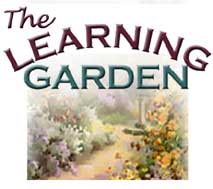
From Seed to Seed:
Plant Science for K-8 Educators
 |
From Seed to Seed: |
|
A. Course Overview
The course content is divided into two parts: From Seed to Seed and Exploring Plant Topics. The first part follows the life cycle of a plant from seed to seed. Although this is not the order in which information is presented in traditional botany textbooks, there are three important reasons why we have chosen this approach:
By presenting material in the "seed to seed" format, you-and your students-are
introduced to important processes in a plant's life cycle and the individual
structures (plant parts) that are essential in these processes. For
example, in the section on photosynthesis, you will be formally introduced
to leaves for the first time. By learning all about leaves and then
immediately learning how they play a role in the life of a plant, you-and
your students-are more likely to retain the information.
Last, but certainly not least, state and national science standards
emphasize the importance of life cycles and students' understanding
of them. We hope that the "seed to seed" format will make it easier
for you to incorporate plants in your life cycles curriculum.
The first part of the course lays the foundation for you to learn about
more complex and fascinating topics in plant biology. The second part
of the course focuses on these topics, including:
It is your job to decide how much of the information is appropriate for your students. What should your students know about plants? In general, we recommend that teachers expose their students to the "big ideas" rather than specific details. Focusing on the big ideas allows students to gain a deeper understanding of a few concepts rather than a superficial understanding of a wide range of topics. In addition, as students progress through their school years, continually revisiting these same major concepts, they are able to make more sophisticated associations and expand their knowledge base.
What are the core life science concepts to which you should expose your
students? The National Science Education Standards detail broad content
standards for grades K-4, 5-8, and 9-12. In general, these standards suggest
that K-4 students focus on observations of individual organisms, their
needs and basic associations. By grades 5-8, students should, according
to the standards, expand their scope to investigate patterns and relationships
within larger ecosystems. Although the breadth of information that you
cover in each concept area varies depending on the grade that you are
teaching, the core life science concepts are consistent for all grades.
Below, we provide a list of the core concepts recommended in the National
Science Education Standards, a brief description of how they relate to
plants, and where in the course they are addressed. By clicking on any
of the course references in the Course Connections section, you
will automatically be linked to the part of the course that addresses
that core concept. For example, if you were to click on "Germination Requirements"
you would be linked to a section of the course that addresses the basic
needs of plants.
Course Connections:
Course Connections:
Course Connections:
Course Connections:
Course Connections:
Course Connections:
Course Connections:
In addition to the core botany content, there are four resources you can
access to expand upon a subject. First, at the end of certain sections,
we include relevant Web sites that have been targeted as useful teaching
tools. Second, by clicking on the following icons as they appear in the
course, you can locate 1) a related standards-based activity, 2) additional
information on a topic, or 3) a relevant article from our Growing
Ideas newsletter:

Link to a related classroom or garden activity that addresses several
national standards (see Curriculum
Activities section for additional information).

Find more details or interesting tidbits on a particular subject.

Pull up a relevant Growing Ideas newsletter article. These feature
useful teaching tools, classroom stories, and expansion activities. For
example, if you were to click on either of the Growing Ideas buttons
on this page, you would access an article on linking plants to your classroom
curriculum.
At the top of each page a menu of navigation buttons will help you maneuver around the course.
![]() Returns
you to the From Seed to Seed: Plant Science for K-8 Educators
Home Page.
Returns
you to the From Seed to Seed: Plant Science for K-8 Educators
Home Page.
![]() Returns you to this introductory section, which provides useful information
about the course.
Returns you to this introductory section, which provides useful information
about the course.
![]() Defines each underlined term that we introduce in the course.
Defines each underlined term that we introduce in the course.
Made possible by a grant from Oracle Corp.
Copyright 2001, National Gardening
Association, Inc.
All Rights Reserved.
For questions regarding this web site, contact Webmaster